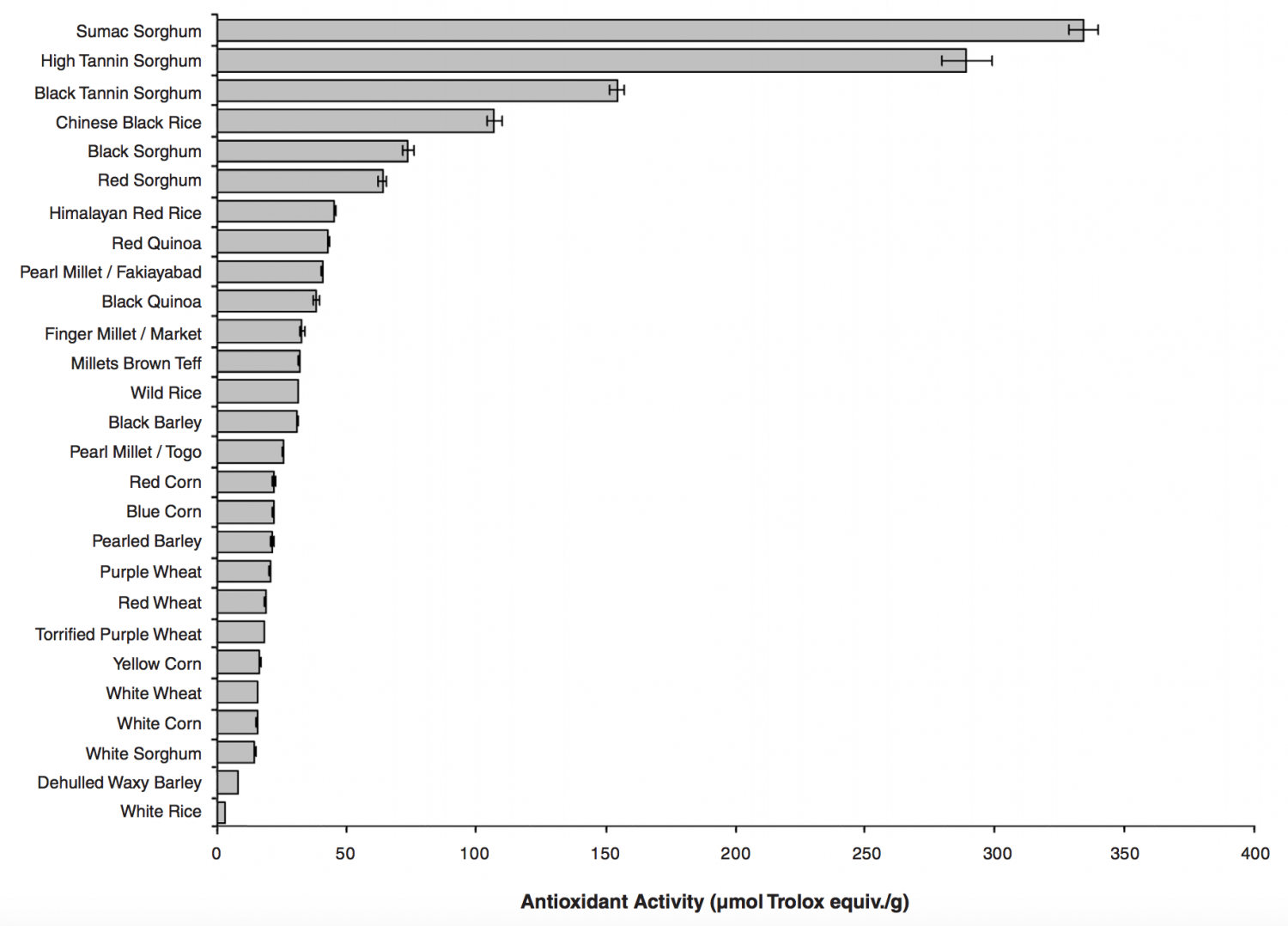
Research has shown that whole grain consumption helps lower the risk of cardiovascular disease, ischemic stroke, type II diabetes, metabolic syndrome, and gastrointestinal cancers (36,37). In addition to dietary fiber, whole grains contain many health-promoting components such as vitamins, minerals, and phytochemicals, which include phenolic compounds. Phenolic compounds have antioxidant properties and can protect against degenerative diseases (i.e., heart disease and cancer) in which reactive oxygen species (i.e., superoxide anion, hydroxyl radicals, and peroxy radicals) are involved (32,57).
The general definition of a phenolic compound is any compound containing a benzene ring with one or more hydroxyl groups. Phenolic acids, flavonoids, condensed tannins, coumarins, and alkyl-resorcinols are examples. All plant-based foods have phenols, which affect their appearance, taste, odor, and oxidative stability (45). In cereal grains, these compounds are located mainly in the pericarp, and they can be concentrated by decorticating the grain to produce bran, which can be incorporated into a food product (i.e., breads, cookies, and tortillas) with increased dietary fiber levels and nutraceutical properties.
Most of the literature on plant phenolics focuses mainly on those in fruits, vegetables, wines, and teas (33,50,53,58, 74). However, many phenolic compounds in fruits and vegetables (i.e., phenolic acids and flavonoids) are also reported in cereals. The different species of grains have a great deal of diversity in their germplasm resources, which can be exploited. Some phenols are unique to one plant species, such as the oat avenanthramides (12). Different methods of analysis for phenols and antioxidant activity are reported in the literature. Unfortunately, it is difficult to make comparisons of phenol and anti-oxidant activity levels in cereals since different methods have been used. The purpose of this article is to give an overview of phenolic compounds reported in whole grain cereals and to compare their phenol and antioxidant activity levels.
Read the full article here. (article by L. Dykes and L.W. Rooney)
